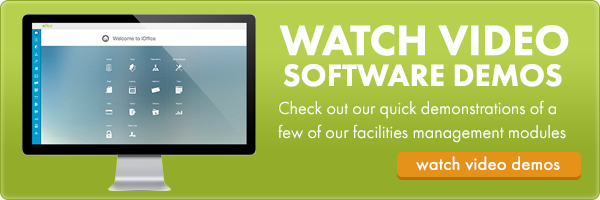Which FM Analytics Should You Be Looking At?


Charged with overseeing the entire operation’s activities, the Facility Manager’s role is complex. From asset maintenance management to ensuring your employees have the tools they need, you were hired to ensure the facility is running at maximum capacity. Data, therefore, is the facility team’s most valuable tool. Technological advancements afford us the ability to gather such data, run reports, and analyze said information. The challenge, however, is sifting through the information and identifying which data is most relevant to your company’s needs and how to make the most of the information at your disposal. Once you have determined this, software solutions such as IWMS provide dashboard analytics that help you determine which aspects are running smoothly, what areas need improvement, and forecast future needs.
The main purpose of data analytics is to provide the company insight into the operations, in an effort to improve processes and make better decisions, ensuring the organization maximizes on all their resources. To better identify what information is critical to your company, it is important the FM has a firm grip on the three principal types of analytics and each solution’s role in understanding the operation. These analytic principals build on one another, simplifying decisions and improving on space utilization, real estate costs, and asset management.

Descriptive FM analytics uses business data to provide insight into past and current trends, answering the critical question: “What has happened?” Such analytics help determine the origin of failure.
Predictive FM analytics use data collected from descriptive analysis to identify “What could happen?” Through such historical data, management can adjust their processes, reallocate resources and devise educated solutions based on hard facts.
Prescriptive FM analytics utilize previously collected data and forecasting to identify “What you should do,” suggesting options to resolve potential issues.
While every company’s budget varies depending upon company specifics such as industry, number of employees, mobility, and real estate details, the leading budgetary costs remain the same across the globe. For organizations to achieve maximized productivity, they must continuously collect data on such investments and analyze accordingly. Analytics must answer critical questions such as: What was the return on investment? What difference did this make on company’s long and short term goals? What worked best and who was positively and negatively impacted? Could this benefit the organization in the future and if so, how will it affect our other locations? We have identified the top analytics every FM should be looking at and what exactly this means to you.
1) Space Utilization
The workspace has evolved dramatically over the last decade. At one time each employee required their own four walls—a quiet space to work with a desk and PC. Those walls are being broken down, with workers seeking inspiration from their colleagues in a more collaborative setting. Many are dividing their time between the workplace, business trips and their home office. These changes have brought about a dramatic shift in how company space is used. Executives and FM teams are realizing the benefits this shift in space utilization can have on the bottom line.
It is important now more than ever for FMs to reanalyze every square foot of space, how it is used, how employee needs have changed and if those needs are being met. What was once office space for 4 people could be transformed into an additional conference or huddle room. Depending upon employee scheduling, one desk could house three employees on an as-needed basis through the implementation of a hoteling strategy. Whether you are at the beginning stages of such a transformation or implemented these strategies years ago, it is important to maintain clear records on your company’s space utilization, detailed stats on space occupancy, capacity and square footage, as well as tangible assets used in each space. Such data helps you forecast future spatial needs based on employee population trends. Our Space Management infographic provides staggering numbers regarding the savings proper data collection and analyzation affords. Which leads us to the next valued analytics…
2) Real Estate Cost vs. Needs
Once you have examined the “what has happened” with your space, the data you have collected should help you determine your course of action. Whether your organization leases or owns its space, real estate costs represent the largest portion of the budget. As employees’ mobility needs grow, companies must take a closer look at real estate costs, reevaluating both needs and expenses, and make adjustments accordingly.
How much space is occupied at any given time? What costs are associated with this space, including asset maintenance? What are the leasing contract terms? Is this space still working for you and if not, why? These are all questions FM teams must answer today. Through collection of data surrounding these questions, Executives and the facilities team are recognizing real estate savings opportunities. Lease/contract negotiations and operational moves, whether to a new space entirely or simply an office redesign, ensure companies are able to keep up with their spatial needs while trimming the budget where appropriate.
3) Facility Maintenance
Real estate costs are not limited to lease/mortgage payments alone. The building and equipment must be maintained, electric and water bills must be paid, and office equipment must be supplied and properly maintained. While equipment costs might be steep, facilities managers have generated real savings through routine maintenance, not only saving the company high repair/replacement costs, but also ensuring downtime for employees is minimized.
While this routine maintenance may require more out of the budget on the front end, companies are seeing positive impacts on the overall budget and they have the analytics to support it. With building equipment running more efficiently, energy costs decrease, less dollars go towards technician labor, and machinery life is extended. It is important to track such data both before and after new protocol is introduced so you can determine where positive results are stemming from, what has had little or no impact, and if there are further changes that should be addressed.
4) Asset Management
Your company invests millions of dollars annually in tangible assets such as computers, tablets, printers, and office supplies. But do you have a proper tracking system in place to determine where all this equipment is located and who is using it? What happens to these supplies when an employee leaves the company? Are there unused assets stored in closets and empty desks? If you have not implemented a process for tracking such items, your company could be wasting valuable dollars. Through appropriate asset management, facilities managers gain insight into who is using what, how much is being used, and what items are underused and should be reevaluated. Couple this with your space management solution and gain another perspective on where your investments are needed most, forecasting future needs.
5) Move Metrics
Analyzation of your company’s space utilization metrics may reveal that the building’s square footage is not being employed to it’s fullest potential. With the aid of your move management software, your team can create various floor plan scenarios, generating move tickets once the desired move has been determined. Task lists can be set up for automation so all involved parties receive their requests and have the ability to provide updates on their progress in real time. Once the relocation is complete, the software will provide your team with the numbers associated with the move, including IT and telecommunication support costs and office personnel relocation costs. Details regarding the number of employees moved, as well as how many full time personnel were involved should reveal how efficient the move process was and where your focus should lie during any upcoming projects.
As companies realize the value data adds to their bottom line, they have begun to collect information on every aspect of the company. With so much information at our fingertips, many are overwhelmed by it all, unsure what details add value and which do not. Data collected and analyzed must answer critical questions such as: what is the ROI, how did performance affect company goals, what processes worked best and which should be abandoned, and what are the potential future benefits? While the particular stats your FM team should analyze is company specific, with factors such as industry, company size, and building specifics playing a major role, there are analytics every organization should consider. For those exploring FM software options, specific reporting needs should be identified during the consideration phase so as to ensure software implementation has the capability to collect and report all relevant data.

